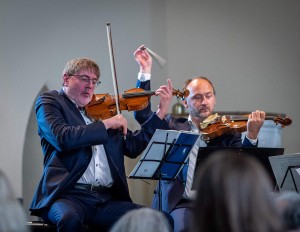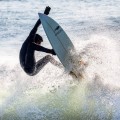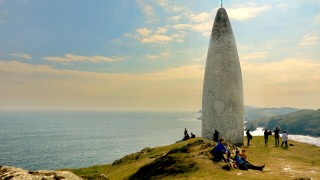
Baltimore
The fishing village of Baltimore sits near the very southern tip of Ireland on the beautiful southwest coast.
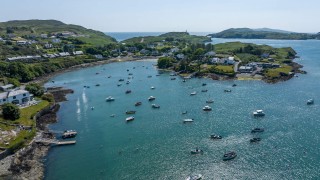
Directions
Located on the R595, just 15 mins west from Skibbereen town.
Special Areas of Conservation
Roaring Water Bay, Lough Hyne, Knockomagh Wood.
Slightly off the main tourist trail, Baltimore has managed to retain its friendly village atmosphere yet still have plenty to offer the holidaymaker. There are no shopping malls but there is also no shortage of high quality accommodation and great places to eat and drink. Across a superb natural harbour lie Carbery’s Hundred Isles, including the enchanting islands of Cape Clear, Sherkin and Heir, just a short ferry ride away from Baltimore pier.
Baltimore’s history has always been shaped by the sea, so much so that in 1631 much of the population was carried off by pirates, never to be seen again – an event known as the Sack of Baltimore. The castle of Dún na Séad or ‘Fort of the Jewels’, from which the village takes its Irish name, was also sacked by seaborne invaders more than once in its long career. Happily, the village recovered fully from these early setbacks and today the labyrinth of creeks and coves which was once the haunt of pirates is a playground for seafarers of a more peaceful kind.
Water-based activities like sailing, angling, diving, and whale watching are things that now draw many visitors to Baltimore and the Isles, but there is also plenty to enjoy without leaving dry land, including an eclectic mix of festivals and other events right through the season.
Baltimore information courtesy of www.baltimore.ie
Discover the Locality
History
Baltimore has a history that can be traced back to prehistoric times. The name itself is often thought to derive from the Irish baile an tí mhóir meaning ‘town of the great house’. A more intriguing theory, however, links it to ancient celtic religion and the pagan god Baal. Whatever the truth, successive generations of men and women have left their mark here, for those who know where to look. Pirates, smugglers and sea battles all had a part in the story.
Prehistoric remains, ruined castles and shipwrecks all have a tale to tell. In recent, more peaceful times Baltimore became known as a centre of fishing and boatbuilding, earning a reputation far beyond these shores. Another aspect of this maritime heritage is a tradition of lifesaving; the lifeboat station, home to two lifeboats, is among the oldest in the country.

The exact connection between Baltimore, West Cork, and Baltimore, Maryland, is a matter of some conjecture. The family estates of the second Lord Baltimore, who founded the American city in 1729, were in County Meath. However, there is no record of a place called Baltimore in that part of Ireland and the first Lord Baltimore may well have chosen the name merely because he liked the sound of it. And that is probably how the capital of Maryland comes to bear the name of a West Cork fishing village!
What is undeniable is that in recent times a firm link has been forged between the two Baltimores on opposite sides of the Atlantic by the regular visits of the schooner Pride of Baltimore.
Dún Na Séad Castle
The castle that watches over the village and harbour of Baltimore from a rocky outcrop also lent the place its Irish name, meaning ‘fort of the jewels’. It was built by the Anglo-Norman Lord Sleynie in 1215. It is thought the ‘jewels’ may be a reference to the castle’s role in the collection of taxes levied on foreign vessels entering the harbour.
During the course of a long and turbulent history Dún na Séad passed through many different hands, notably those of the O’Driscolls, until it eventually fell into ruin after being taken by Oliver Cromwell as a garrison for his troops in 1649. Among the first to sack the castle were McCarthys in 1305. By a happy coincidence the present castle has now been carefully restored by other McCarthys, the present owners. Visitors can once again admire the ‘Great Hall’ or take in the panoramic view across Baltimore Harbour from the battlements.
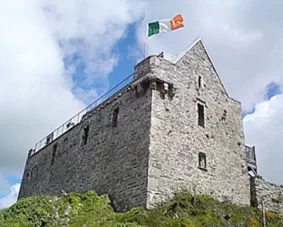
The Sack Of Baltimore
In the summer of 1631 Baltimore fell victim to a sensational attack by pirates. At that time the population consisted chiefly of settlers from England who had arrived some years earlier to work in the lucrative pilchard fishery under lease from the O’Driscoll chieftain, Sir Fineen O’Driscoll. Piracy was rife along the shores of West Cork, much of it of a home-grown variety; indeed the settlement’s founder, Thomas Crooke, stood accused of involvement himself. However, the danger in this case was from much farther afield.
On board two ships that left Algiers was a combined force of Dutch, Algerians and Turks under the command of one of the most successful leaders of Barbary pirates, a renegade Dutchman called Murat Reis the Younger. By the time they reached the coast of West Cork, more than 1,000 miles away, they had already seized a number of smaller vessels, imprisoning their crews. The captain of one was a Dungarvan man by the name of John Hackett. Reis’ original target was probably Kinsale, but Hackett declared the harbour there ‘too hot’ to enter and in return for his freedom he offered to pilot Reis to the defenceless village of Baltimore.
Undetected, the pirates anchored outside the harbour ‘about a musket shot from the shore’ late in the evening of 19th June. From here they launched an attack on the sleeping village before dawn the next day.
The inhabitants were taken completely by surprise. More than 200 armed corsairs landed in the Cove, torching the thatched roofs of the houses and carrying off with them ‘young and old out of their beds’. Moving on to the main village, the pirates took more captives before musket fire and the beating of a drum alerted the remaining villagers and persuaded Reis to end the raid. By that time more than 100 men, women and children had been taken. They were herded back to the ships, which bore them away from the coves of West Cork to the slave markets of North Africa.
The raid on Baltimore was the worst-ever attack by Barbary corsairs on the mainland of Ireland or Britain. Most of the names in the official report sound English, but it is likely that there were also a few native Irish among the prisoners. What is certain is that very few of the 107 were ever heard of again (three women at most, who were ransomed up to 14 years after their abduction). The fate of the rest is unknown, but for many it would have been to end their days as galley slaves or concubines in the harems of Algiers. For his part Hackett was arrested and hanged on a clifftop outside the village.
The Sack of Baltimore is fertile ground for conspiracy theories. They generally point the finger at the rapacious Sir Walter Coppinger who had been seeking to prise the village away from the O’Driscolls, oust the settlers and secure it for himself. Whether by accident or design, the pirates carried out part of this plan for him. In the aftermath of the raid the surviving villagers moved inland to Skibbereen and elsewhere in search of greater security and Coppinger’s designs on the village were realised. The Sack marked the end of the 400-year reign of the O’Driscolls as overlords of Baltimore.
Things to do
Fishing & Angling
Baltimore enjoys some of the best and most varied sea angling in Ireland, starting with the pollack and mackerel that shoal around the mouth of the harbour. Deep sea angling centres on the really big fish found a little farther offshore, where large skate, cod, conger, ling and other fish haunt the many reefs and wrecks. The Stags and the Fastnet Rock are two well-known local marks. Sharks are plentiful during summer and Baltimore is an established centre for shark fishing, which is all done on a ‘tag and release’ basis.

There are a several fully equipped and licensed sea angling charter boats operating from the harbour, while the shelter of the islands makes Baltimore a great venue, too, for small boat fishing. Small craft can be launched easily from the public slipways and can also be hired locally. For shore angling there are a number of local rock marks, and the famous bass beaches of West Cork are only a short distance away. Freshwater fishermen will find sea trout and salmon in the Ilen river above Skibbereen. Shepperton (Shreelane) Lake, a picturesque stocked fishery by the Cork road, holds a good head of rainbow trout and some serious pike, with boats available for hire at the lakeside.
The Islands
Across a superb natural harbour lie Carbery’s Hundred Isles, including the enchanting islands of Cape Clear, Sherkin and Heir, just a short ferry ride away from Baltimore pier. See the Islands section for full details.
Fastnet Rock
Surmounted by its famous lighthouse, the Fastnet Rock is one of the most iconic maritime landmarks in the world. Moreover, a journey there from Baltimore takes you past some of the finest scenery of Carbery’s Hundred Isles. Apart from its significance to shipping, the rock has other claims to fame, including being the turning point of the celebrated Fastnet ocean race and lending its name to one of the sea areas in the BBC shipping forecast. In times past it was nicknamed the ‘Teardrop of Ireland’ by virtue of being the last piece of home soil that Irish emigrants passed as they sailed for America. In a more frivolous vein, it is the setting for the poem ‘A Dirty Night on the Fastnet Rock’ by the 12-year-old William Pakenham Walsh, future Bishop of Ossory, Ferns and Leighlin.
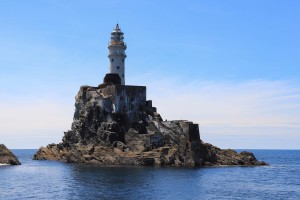
The present lighthouse, the second on the site, is the tallest and widest anywhere in Ireland or Britain and recognised as one of the most elegant in the world. The loom of the light can be seen in the night sky over much of West Cork. Several operators from Baltimore and Cape Clear offer boat trips around the Fastnet. Without actually landing on the rock, you can pass close by the foot of the 54 m (177 ft) high tower of Cornish granite, gaze up at the revolving lantern and gain a sense of the colossal feat of engineering needed to place it there. There is also a good chance of seeing whales, dolphins or other marine life en route. The waters around the rock are exceptionally rich in life, too, and a paradise for sea anglers and divers.
Lough Hyne
A short distance from Baltimore, Lough Hyne is the perfect place if you enjoy walking, hill climbing, or a gentle stroll along wooded lanes by the lake shore. This saltwater lake is connected to the sea by rapids and was Europe’s first marine nature reserve. It is a treasure house of unusual species such as sea urchins and oysters, which are strictly protected. The lough is also popular for swimming, diving and kayaking. Fishing is permitted but not in the vicinity of the piers.

Lough Hyne owes its tranquility to being protected from the worst of the winds by steep hills on three sides. If you feel like a challenge, climb the wooded Knockamagh hill behind the lake to get an unsurpassed view of Baltimore, Roaringwater Bay and Carbery’s Hundred isles. A more relaxing hour can be spent wandering along the western shore towards Barloge Creek and the Rapids. The small island in the centre of the lake with a crumbling ruin is where the disgraced Sir Fineen O’Driscoll ended his days in 1629, alone and in poverty, having given away his clansmen’s lands to the English in return for a title. A pot of gold is said to be buried there still!
Diving & Snorkelling
The influence of the Gulf Stream on the seas around Baltimore means conditions for diving are ideal – clear, unpolluted water, colourful and abundant sea life, pleasant temperatures. You can explore the reefs around the Fastnet Rock or head east to the Stag rocks. There are numerous wrecks, ranging from a man o’ war to the spectacular 160,000 ton ore-carrier Kowloon Bridge and including the German submarine U260. The islands of Roaringwater Bay provide sheltered dive sites in any weather, while fans of drift diving will appreciate the Gascanane Sound between Cape Clear and Sherkin Island. For the beginner or experienced diver, Baltimore has much to offer.
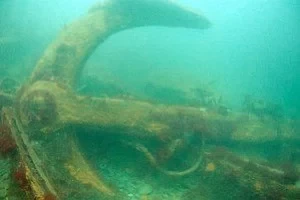
The local dive centres provide a full range of services including diving trips by hard boat or RIB, equipment sale and hire, training courses and technical support. Non-divers can also experience the beauty of the underwater world through snorkelling. This is an activity that can be enjoyed by almost anyone, from the age of six upwards, and a guided snorkelling tour makes an ideal family outing.
Kayaking
The coast around Baltimore is studded with caves, cliffs, islands and quiet coves. Sea kayaking is a unique way to explore this beautiful coastline and see some of its spectacular wildlife at close quarters. While the area is a richly rewarding one for experienced paddlers, it is also accessible to beginners of all ages with the help of instructors and guides at kayaking centres in the area. These offer instruction, from beginner to advanced level, and guided tours, letting you enjoy the sport in confidence and safety. All equipment is supplied. Under the expert guidance of a qualified instructor beginners rapidly find their feet and are soon ready to experience the many delights that the West Cork area has to offer, including Lough Hyne and Carbery’s Hundred Isles.
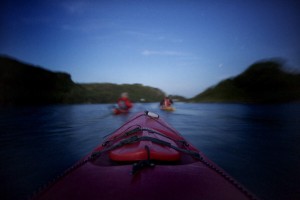
Leisure Centre
Holidaymakers and permanent residents can all keep in trim at the Baltimore Community Leisure Centre. The centre has a 16.5 metre swimming pool with bubble pool, children’s pool, jacuzzi, sauna and steamroom. There is also a well-equipped gymnasium with treadmills, exercise bikes, ski machine, rowing machine, Stairmasters and a wide range of machine weights. Temporary membership and other deals are available for summer visitors and special events are run during the course of the season for children and adults.
Sailing
Baltimore might have been made for sailing. As Peter Somerville-Large notes in The Coast of West Cork, the area is ‘one of the best and safest sailing grounds for small boats in the British Isles’. The large natural harbour is perfect for windsurfers and dinghy sailors, and Baltimore Sailing Club regularly hosts dinghy race meetings. The harbour also provides a safe anchorage for visiting yachts with visitors’ moorings, pontoon berths and shore facilities, so it is a popular port of call for yachts cruising the southwest coast or on passage across the Atlantic.
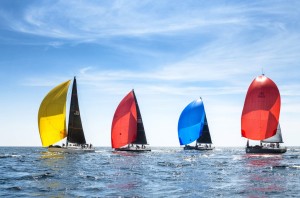
At the other extreme, the sheltered waters of Carbery’s Isles and Roaringwater Bay represent a unique inshore cruising ground with a variety of harbours and quiet anchorages, where you can sail for miles without venturing into the open sea if you don’t want to.
And the pleasures of sailing at Baltimore are not just for boat-owners or hardened sailors. If you are a novice but fancy exploring the local area under sail or discovering the magic of the southwest coast from the sea, there are charter yachts with experienced skippers ready to make it a reality. If learning to sail is your ambition Baltimore has sailing schools catering for all age groups and levels of sailing skill under the watchful eye of expert instructors.
Powerboating
Baltimore has the same advantages for powerboating as it does for sailing – sheltered waters, islands to visit, creeks to explore, safe berths and good shore facilities. These attractions make it popular for all kinds of power craft, from large motor cruisers to outboard dinghies. The public slipways permit easy launching and retrieval of smaller craft. Boat rental, sales and training are also available.
Whale & Wildlife Watching
The waters of southwest Ireland are exceptionally rich in marine life and Baltimore is one of the centres at the heart of the explosive growth in Irish whale and dolphin watching. Seeing whales and dolphins close-up from a whale-watching boat is one of the most exciting experiences a holiday can offer. The season usually begins in late spring, minke whales being among the first to appear, along with several kinds of dolphin, some of which perform spontaneous airborne displays alongside the moving boat. The climax of the season is from late summer onwards with the advent of the giant fin whales – the second largest animal on earth – while there is also the chance of sighting an acrobatic humpback whale.
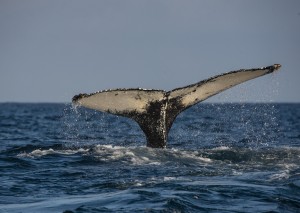
Whales and dolphins are not the only marine wildlife on offer. Seals venture right up to the piers and there is often no need to venture farther than the harbour’s mouth for the chance of seeing a giant basking shark swimming lazily under the cliffs. Slightly farther from shore it might be the fin of a sunfish or blue shark cutting the surface, or even the carapace of a leatherback turtle. Baltimore and the islands – in particular, Cape Clear with its famous bird observatory – are also a paradise for birdwatching. Rare bird sightings are possible at any time of year, but spring and autumn migrations are especially rewarding. Sea watching reaches a climax in late summer when species like the larger shearwaters appear inshore, sometimes in considerable numbers.
Festivals & Events
Baltimore and the Isles have more festivals and other events than almost anywhere else in West Cork and they are a great time to pay a visit. Three different kinds of event take place annually. Festivals celebrate different aspects of culture, music, history, local produce, etc. Activities are primarily about participation, though there is often a spectator element, too. Regattas feature rowing or sailing races and are big occasions for the village or island as a whole. See www.baltimore.ie for full details of up coming events.
